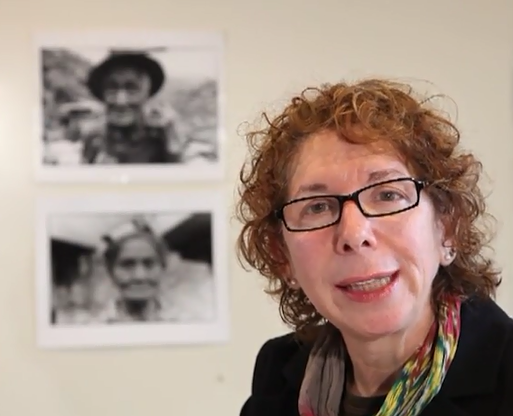Trix Rosen’s Kalinga journey, then and now
For photojournalist Trix Rosen, the Kalinga tribe in the Cordilleras remains a bicontinental work in progress.She has been going back and forth to the Philippines for more than 25 years, chronicling how the lives of these indigenous people have changed over the years. She plans to go back again in March.
In her exhibition and book project, “A Kalinga Journey Through Time,” Trix unveils a collection of photographs taken from the time she first visited the villages and crossed the hanging bridge of the Chico River in the 1980s. She will be returning in March to update, possibly showing how the Kalinga people’s rapidly changing lifestyles are powered, if at all, by technology
“Fascinated by the images of an ancient people beginning the process of a contemporary metamorphosis, I returned many times over,” she said.
One of the Kalinga people Trix has become friends with over the years is Virgie Puyoc.
“She invited me to visit her village, Luplupa, in Tinglayan (municipality),” wrote Trix on her USA Projects page, where she solicits funding support for the photographic research. “Our deep friendship grew over the many years I returned to visit her and her family and friends.”
Luplupa now has a Facebook page, Trix said.
“I know Virgie does not have Internet at her house in Bado Dangwa, but works on her computer at her office in Tabuk village. I will have to see just how much they are exploring technology when I am there in March,” she said, sharing with The FilAm some details of an email conversation she and Virgie had recently.
“I spoke to Virgie Puyoc and she said that now there is a local high school in Bado Dangwa, Tabuk (the new village) and that it has Internet and computers, and she said that the children were fond of Facebook,” said Trix. “In the older village, Luplupa, there is no Internet and you have to go to Baguio or Bontoc to upload.”
The first time she visited in 1986, the Kalingas – known as headhunters and for resisting colonization, as described by Trix – lived in one “isolated landscape that appeared to be untouched by modern times.”
 Trix wrote: “When I first arrived, many of the women were bare-breasted, with tattoos of crosshatched lines that covered their arms like tight sleeves on a thinly knit sweater. The elders would squat in small clusters in front of century-old nipa huts, to talk and smoke hand-rolled cigars. I revisited the region in 1993, 2000 and 2002 and observed the changes in the construction of houses and in the world-view of the family after the installation of electricity, bringing lights and television. Some members have resettled in a new village with modern concrete structures, and now have benefited from additional resources, through higher education and better jobs, to build a family compound.”
Trix wrote: “When I first arrived, many of the women were bare-breasted, with tattoos of crosshatched lines that covered their arms like tight sleeves on a thinly knit sweater. The elders would squat in small clusters in front of century-old nipa huts, to talk and smoke hand-rolled cigars. I revisited the region in 1993, 2000 and 2002 and observed the changes in the construction of houses and in the world-view of the family after the installation of electricity, bringing lights and television. Some members have resettled in a new village with modern concrete structures, and now have benefited from additional resources, through higher education and better jobs, to build a family compound.”
Learn more about Trix’s efforts at preserving Kalinga history and culture through her photographic album. A member of Bakas Pilipinas, she specializes in photographing architectural restoration and historic preservation projects for the Library of Congress, State Historic Preservation Offices (SHPO), city agencies and architectural firms.
—————————————————

The chocolate for anti-aging, weight loss and energy.
For more information, click here.
 FANTASIA FLORAL DESIGN for flower orders that will Impress that special person in your life this Valentine’s Day or for any occasion. Click here to order your Valentine gifts
FANTASIA FLORAL DESIGN for flower orders that will Impress that special person in your life this Valentine’s Day or for any occasion. Click here to order your Valentine gifts











